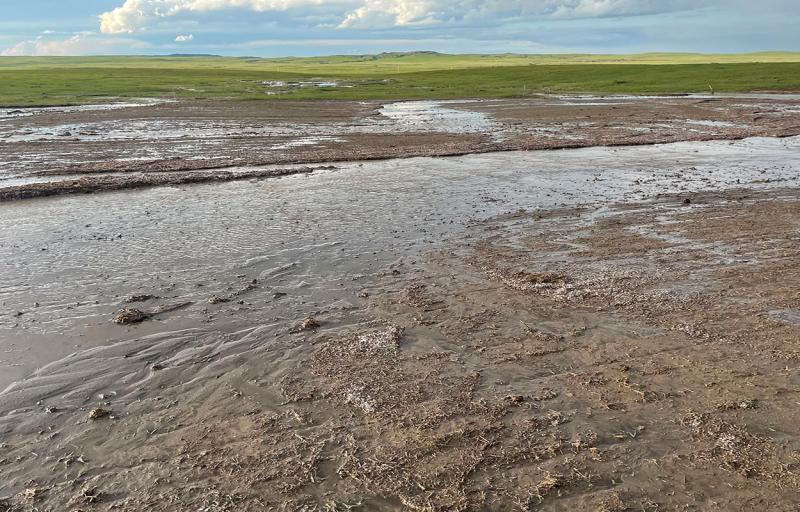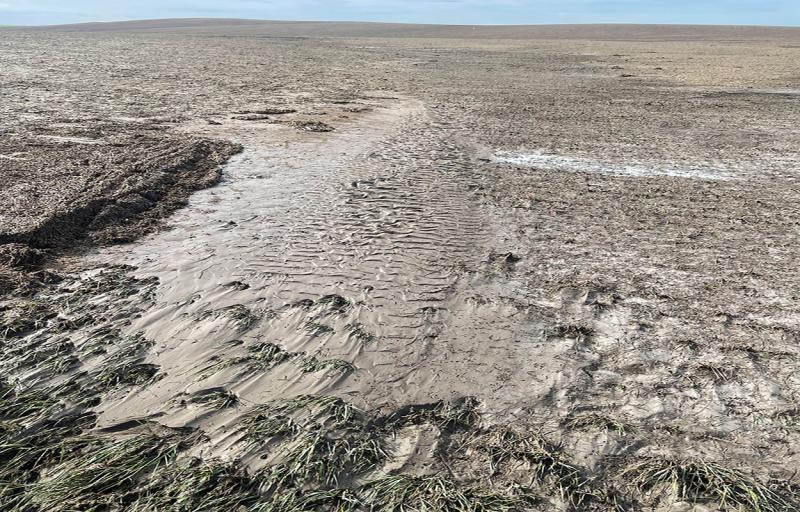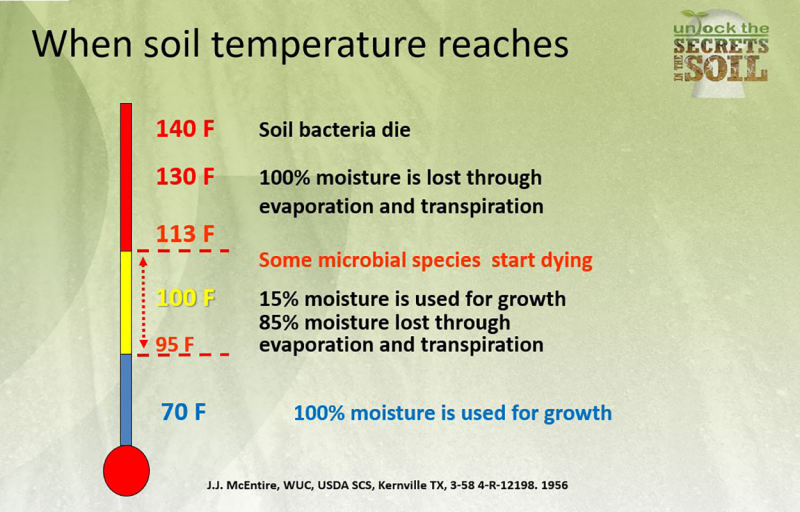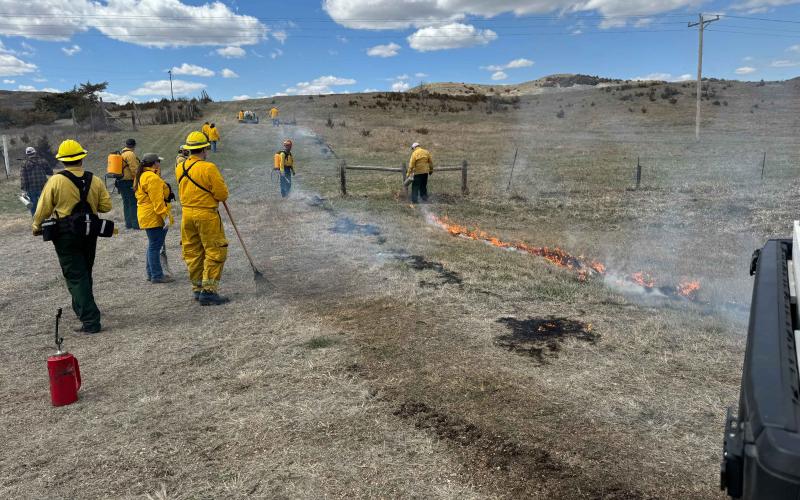Written collaboratively by Krista Ehlert, Jameson Brennan, Hector Menendez and Tanse Herrmann, NRCS State Grazinglands Soil Health Specialist – South Dakota.
Introduction

In a previous article, Five Range Management Principles or Rancher Rules were introduced to help producers make management decisions on rangelands. Each of the five principles will be elaborated on through this article series. The fourth principle describes the importance of residual forage from a soil health perspective. Residual forage, specifically, is the green, living leaves and stems. In contrast, residue is the dead plant material on the surface or “litter.” Both are important when discussing soil health.
Soil Health
In general, soil health is the concept of how well a soil does what we want it to do; healthy soil provides key ecosystem services, such as filtering air, water and nutrients; producing crops and productive grazing lands; and supporting wildlife. Soil is not to be mistaken with “dirt,” which implies that something is dead; instead, soil is living! One teaspoon of productive soil can be home to 100 million to 1 billion bacteria (NRCS1). The mass of microbes in the soil is equivalent to about 2 cows per acre! Moreover, there are some bacteria in the soil that influence water movement; they produce a substance known as “soil glue” that binds soil particles into small aggregates (a high level of soil aggregate stability means that the soil is resistant to breaking apart when exposed to external factors, like water and wind erosion, shrinking and swelling, and tillage).
Why is residual forage (a.k.a. soil armor) important?
Residual forage, or the amount of forage that is left behind after a grazing event, is also known by some as the first principle of soil health – “soil armor” (NRCS2). It is critically important and provides several benefits, including the following:
-
Habitat
Residual forage can provide sugars known as root exudates that help feed microbial communities, helping to keep them functioning. -
Erosion
Wind and water erosion are less of a concern in soil that has strong armor. Residual forage helps hold the soil organic matter and nutrients in place. The loss of topsoil evokes images out of the Dust Bowl, but those images can also be found today (Figures 1 and 2) – the value of topsoil with respect to nutrients amounts to nearly $3,000 per acre.

-
Evaporation
If the soil is covered, the moisture inside it is more protected from evaporation. We add mulch to gardens to keep the moisture from escaping and to help keep weeds out – same idea here! -
Snow Catchment
Standing residual forage effectively captures snow, which not only adds another insulating layer to the soil surface, but it is essential in having effective ground water recharge in the spring with snow melt. That means that even if we don’t receive timely rains in the spring for new growth, the pasture still has enough ground water present to get started. -
Temperature
Like the idea that keeping the soil covered prevents evaporation, it also results in moderate soil temperatures. You can test this by placing a thermometer in a bare patch of soil versus one that has residual forage – the former will always be warmer in the summer and colder in the winter by several degrees! Temperature extremes (over 70 to 80 degrees Fahrenheit or below freezing) are not conducive to high-functioning soil biology, as demonstrated in Figure 3.

-
Compaction
When a raindrop hits the ground, ideally it infiltrates into the soil, where plant roots can uptake it. When rain falls on bare soil, it essentially “bounces off,” and does not get infiltrated, and instead dissipates and causes compaction. One way to think about this is having a parking lot versus a lush, covered grassland – when rain falls in the parking lot, it runs off the landscape—much like it does when it hits bare soil. -
Weed Suppression
Weeds are great competitors, which means when there is open space to move into, they do just that. Maintaining a level of residual forage creates a level of competition that can effectively keep out unwanted species and make it difficult for them to establish.
How much soil armor is enough?
A general rule of thumb is to not graze below a 4-inch height. This is to protect the plant and allow photosynthesis to continue, which will produce most of the carbohydrates needed to produce new leaves. If there is inadequate green leaf material left, the plant moves carbohydrates from where they are stored in the roots into the stem to make new leaves – overtime, this is detrimental to the roots. In addition, taking off too much green leaf material means that a longer recovery time is needed, especially during times of high stress like a drought. Similarly, tiller density in the fall and plant vigor the following spring is negatively impacted when inadequate residual is left.
Summary
Understanding the importance of residual forage – the amount of green leaf left after a grazing event – can aid producers in developing a grazing plan that fits the goals for their operation. When soil is treated as a living component of the system, producers can start to capitalize on the symbiotic relationship that occurs when soil health is front and center – the soil provides a strong foundation for the range, which in turn, provides high-quality forage for cattle, resulting in a great return on investment in the form of breed up, average daily gain, and more money in the pocketbook. For more information on residual forage, reach out to your SDSU Extension or Natural Resources Conservation Service (NRCS) range specialists.
References
- NRCS, Soil Bacteria.
- NRCS, Soil Health Principles.


